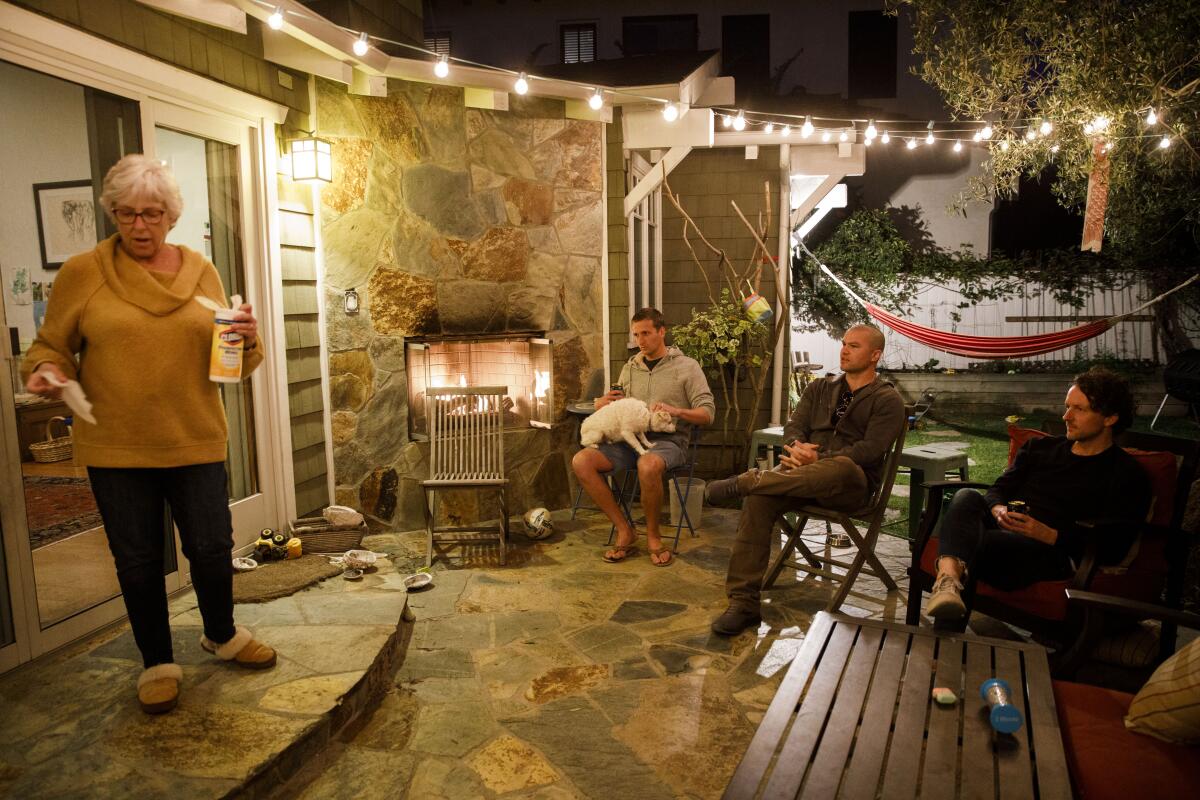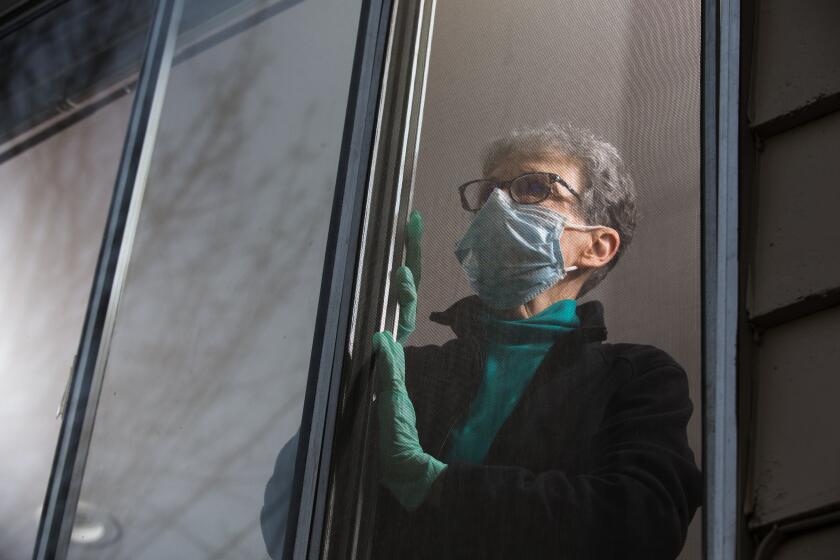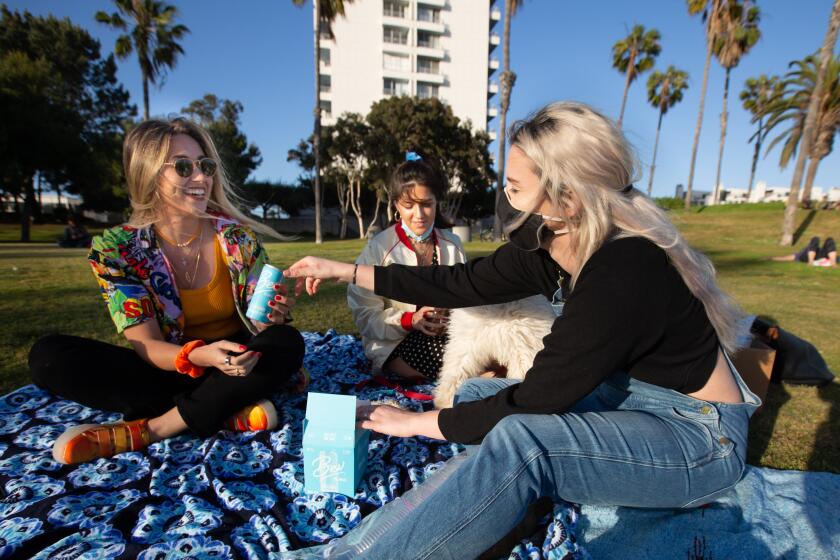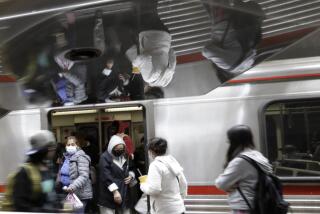So you really want to see your friends? Here’s how to assess the risk

- Share via
Your willpower is fraying. Mine is too.
For two months we’ve been good. We’ve Zoomed. We’ve FaceTimed. We’ve waved at neighbors from across the street and behind the fence.
But enough is enough. We want to see friends and family in real life.
Visual look at the third phase to reopen California amid the coronavirus outbreak.
Now many of us are allowing cracks to form in our protective coronavirus fortresses, crossing our fingers while doing our best to mitigate the risk.
We let our kids ride their bikes together, as long as they wear their masks. We invite friends into our yards for drinks, being careful to set the chairs six feet apart.
We experiment with picnics and social distancing walks. We make pacts: I won’t see anybody and you won’t see anybody and that way we can see each other. Right? Maybe? No?
Los Angeles County health officials are still advising people to resist the urge to visit friends and family, even from a distance of six feet.
“We are recommending that you continue to do your distancing in the same ways that we’ve recommended before, using technology,” Barbara Ferrer, the county’s director of public health, said Friday. “We are not recommending at this point in time that people should be in social units together.”
Elsewhere, however, public health experts acknowledge that even rule followers are likely to experience quarantine fatigue and are looking for ways to cheat as safely as possible.
Dr. Mary Bassett, a former health commissioner for New York City and professor at Harvard’s T.H. Chan School of Public Health, said she expects people will soon begin to expand their “cone of safety” beyond households, whether or not public health officials think it’s a good idea.
“Regardless of what we tell them, people will try to rank their risk,” Bassett said. “Whether outdoor activities are safer than indoor activities, does it make sense to expand the circle of people I see — these are the things people are going to want guidance on.”
The hard truth remains that just as abstinence is the only surefire way to avoid a sexually transmitted disease, the best way to protect ourselves from the coronavirus is by remaining physically isolated from one another. But for many of us, and for a variety of reasons, that may be an impossible standard to maintain.
So, if you must see friends, how can you tell if an activity is high-risk or low-risk?
Stunning visualizations show what the novel coronavirus, SARS-CoV-2, looks like at an atomic level of detail.
A general rule of thumb is that outdoors tends to be better than indoors, small groups are better than large groups and a shorter period of time is better than a longer one, said Julie Swann, head of the Fitts Department of Industrial and Systems Engineering at North Carolina State University in Raleigh.
The relative risk of seeing others also depends on how prevalent COVID-19 is in your community and how much potential exposure the friend or family member you plan to see has had to the virus, said Chunhuei Chi, director of the Center for Global Health at Oregon State University.
“The idea of safe or not safe is not black and white,” he said. “It’s a degree that is influenced by multiple factors.”
Yes, there are significant health risks associated with lockdown. But returning to normal life too soon and rushing herd immunity would be even worse.
Wearing a mask will reduce your risk of becoming infected with the virus if you don’t have it, and of spreading it to others if you do have it but don’t realize it.
But enough with the broad strokes. The L.A. Times asked Dr. Marybeth Sexton, an infectious diseases expert at Emory University School of Medicine, to help assess the risk of seven social activities that people are already engaging in.
Two families gathering for a barbecue in the backyard, with families staying six feet apart
Verdict: Tough if kids are involved.
Context: Cooking burgers on the grill is OK, Sexton said. Scientists think the majority of coronavirus transmissions are through respiratory droplets that spread when people are in close proximity to one another. Some contact spread is also likely if someone coughs and sneezes on a surface like a railing or doorknob, and then someone else touches it. But if the food was prepared by someone practicing good hand hygiene and then is well cooked, it’s probably OK. Just make sure people were not touching the same utensils or plates.
The concern here is that while the adults can execute the plan safely, it’s hard to explain social distancing to kids, especially if they haven’t seen one another in a long time. And if the kids are playing together, they are bringing anything they are exposed to back to their families.
Socially distanced walk, with (let’s admit it) some drift
Verdict: Relatively low risk.
Context: It’s hard to always know you are six feet apart, and Sexton said there’s nothing magical about six feet anyway. Some virus-laden droplets expelled in a cough or sneeze travel three feet, while others might make it as far as nine.
The good thing about a walk is that you’re outside, and that’s generally safer than being inside because there is better airflow to carry droplets away from you. And as long as you are trying to maintain six feet of separation as much as possible, the only thing that would make you even safer is wearing a mask. (That goes for both of you.)
If beaches and businesses are reopening, does that mean I can visit my friends and family now? The new rules on socializing during social distancing.
Moms night out in a backyard (no kids, no spouses), bring-your-own everything, stay six feet apart
Verdict: Tricky.
Context: Keeping it outside, keeping kids from playing together and keeping people from going in and out of the kitchen or sharing food and drinks are all good. But as we ease back into socializing, Sexton said, smaller is safer.
If there were 10 moms at the gathering, and you assume that each mom went to a similar party earlier that weekend, then attending this party is like being exposed to 100 other people.
As the coronavirus keeps us stuck at home, scientists and health officials fear that social distancing could take a toll on our mental health.
That’s where a gathering like this can rapidly spread the virus, especially if one of the guests was particularly contagious, she said.
Drinks around a fire pit, chairs six feet apart
Verdict: Fairly low risk.
Context: If people really observe distancing in that kind of situation, then it’s fairly safe as long as you limit it to a small number of people.
Two families quarantining together
Verdict: Mixed.
Context: There are some really nice things about this idea, Sexton said, but it’s hard to guarantee that someone in the group isn’t going to be exposed. If they are, they are bringing that exposure to a larger group of people than they would if they were with only their own family.
Kids riding bikes together while wearing masks
Verdict: Intermediate risk.
Context: What this situation has going for it is that the kids are outside, and their bikes prevent them from getting too close to one another. Plus, you’ve got the protection of masks, so that’s great.
But you have to be careful, because if any of these kids have been playing with other kids, their risk of exposure is magnified, and they carry that risk back to their families, Sexton said.
To make this safer, make sure none of the kids has had a ton of exposure to other kids and that they really understand that the masks need to stay on. They should also wash their hands immediately when they come home.
Coronavirus: Some Angelenos loosen up their personal boundaries as they try to balance safety and mental health
Letting someone use your bathroom
Verdict: Safer than you might think, if you take some basic precautions.
Context: Sexton said there are a couple of ways to make this scenario safer. If someone goes into the house to use the restroom, let them go in alone. When they’re done, it’s critically important that they wash their hands really well. Then you’ll want to clean the restroom afterward. Almost all household cleaners have indications that they kill coronavirus.
As long as you clean surfaces and wash hands, you should be safe.
Times staff writer Rong-Gong Lin II contributed to this report.
Help the Los Angeles Times reimagine what California should look like after the COVID-19 pandemic ends.













